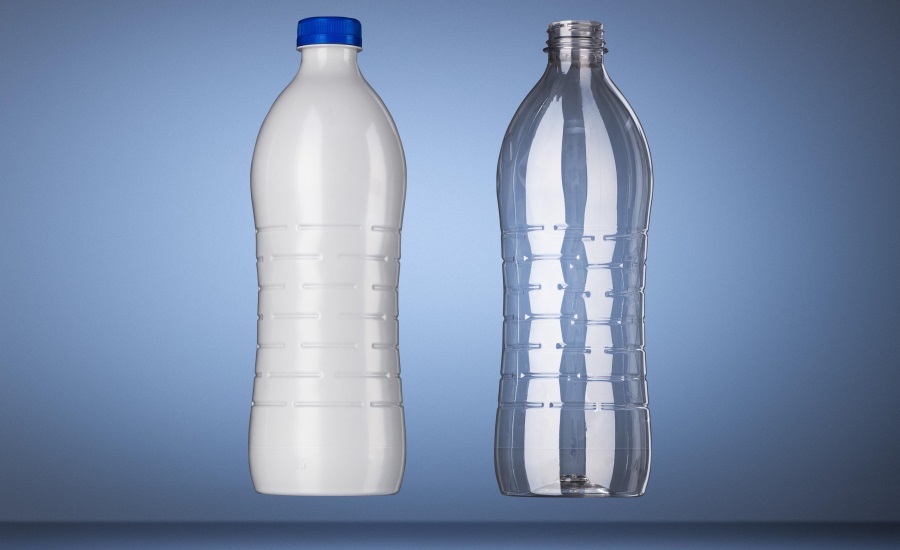
Ever lighter PET bottles have been gaining ground in the water segment in particular for some time now. And for good reason, as they give both manufacturers and consumers a good number of benefits. The PET experts at KHS have now applied these advantages to the milk bottling process. At the Bottles & Shapes™ center at KHS' production site in Hamburg, Germany, a lightweight 1-liter bottle for milk and mixed milk beverages has now been made ready for market and successfully tested. Frank Haesendonckx, head of Technology at KHS Corpoplast, reveals, "With this light PET bottle we can now offer the milk industry an interesting alternative to the carton." As with all packaging developments KHS' PET specialists have managed to effect a perfect balance between economy, market acceptance and product quality in this ultralight milk bottle, too. Like the beverage industry, the milk industry also has to produce under great cost pressure while satisfying the highest demands for product safety. In this context the light PET bottle for milk and mixed milk beverages can boast the following plus points: It can be filled aseptically protects the product lowers production costs and is 100% recyclable.
Costs saved in the long term without loss of quality: The 1-liter bottle recently developed by KHS, with a thread diameter of 32 millimeters, weighs just 20 grams. In comparison, other bottles of the same size common to the market usually notch up 22 grams on the scales. Due to a substantial material saving of 2 grams of PET a bottle, at a production rate of 50 million bottles up to €140,000 can be saved per annum. Says Frank Haesendonckx, "We can also see even greater potential for savings in weight.“ The bottles can also be easily processed as shrink packs. This means that costs are no longer incurred for secondary packaging such as trays, which are much more expensive regarding materials and transportation.
Consumer friendly with a high marketing value: Being light or ultralight is not enough, however; first and foremost, the packaging must also convince the customer. Here, the newly developed bottle primarily scores on its convenient handling, with a staggered rib structure giving it the required good grip, for instance. Ideally, milk products should be protected by an ultraviolet light barrier. KHS has two variants here: the new 1-liter milk lightweight can either be designed as a transparent bottle which is enveloped in a protective sleeve after filling or the PET packaging is produced as a white bottle right from the start with a reliable light barrier of titanium oxide.
FlipBase for dimensional stability: The typical vacuum created in bottles by the differences in temperature between hot filling and subsequent cooling has been taken into account by the Bottles & Shapes™ experts; the bottles are manufactured with a FlipBase on a stretch blow molder before being conveyed by their neck ring, aseptically filled and sealed. The FlipBase reliably compensates for the negative pressure generated in the bottle. Frank Haesendonckx concludes, "With this lightweight, cost-effective and consumer-friendly bottle we're giving our customers a type of packaging which both protects their milk products and looks attractive on the shelf."







